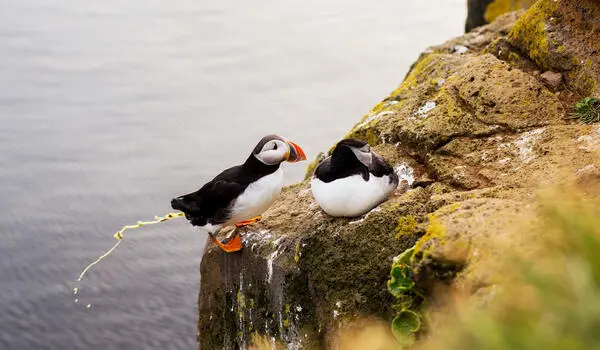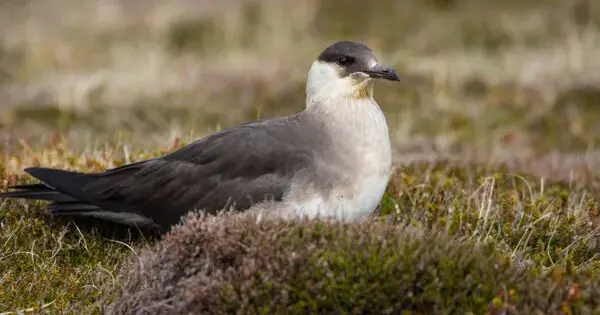According to new research, the northward movement of Balearic shearwaters is driven by individual behavioural plasticity rather than evolutionary selection. The findings were published after a decade-long investigation that tracked individual birds. The findings suggest that individual animals may have more behavioral flexibility to respond to climate change consequences than previously anticipated.
Individual animal responses to climate change will determine whether communities survive or become extinct. Many species are altering their ranges as the environment heats, but the reasons driving this have remained unclear. New research on Europe’s most endangered seabird, the Balearic shearwater (Puffinus mauretanicus), has revealed that the species’ rapid migratory range shift is driven by individual behavioral flexibility rather than evolutionary selection. The study, led by biologists at the University of Oxford, was published today in the journal Proceedings of the National Academy of Sciences.
The findings could assist to shape conservation plans for fragile migratory bird species. The findings also show that individual animals may have more behavioral flexibility to respond to climate change impacts than previously assumed, albeit this behavioral adaptation may have hidden costs, making the long-term impact on this species unknown.
We found that the best predictor of this change in migratory behaviour was the average sea surface temperature in the summering-grounds, suggesting that the birds may well be following changes in underlying marine resources.
Joe Wynn
Balearic shearwaters are long-lived but critically endangered, primarily due to losses caused by fisheries bycatch, as they can be trapped on baited longline hooks and gill nets. They breed in distant areas of the Mediterranean’s Balearic Islands before migrating to spend the summer off the Atlantic shores of Spain, France, and, increasingly, the United Kingdom.
Since 2010, researchers from Oxford University’s Biology Department and from the University of Liverpool, together with collaborators working in Ibiza, have been tracking colonies in Mallorca using miniature on-board geolocation devices. This revealed that the birds have been migrating further and further north once they leave the Mediterranean.
It was unknown, however, whether this change was being driven by individual birds altering their behaviour, or through natural selection favouring birds that travel further.
To answer this, the researchers compared the migration tracks of the same individuals tagged in multiple years. This revealed that individual birds were shifting their range northwards by an average of 25km per year.

Co-lead author Joe Wynn (Department of Biology, University of Oxford & Institute of Avian Research “Vogelwarte Helgoland”), said: ‘We found that the best predictor of this change in migratory behavior was the average sea surface temperature in the summering-grounds, suggesting that the birds may well be following changes in underlying marine resources. The fact that individuals can be this flexible in the face of rapid climate change is encouraging.’
But despite this flexibility in their summer destination, Balearic shearwaters are much more constrained in where they breed, so that migrating further north means they have further to fly back in the autumn.
Co-author Professor Tim Guilford (Department of Biology, University of Oxford) added: ‘We found that individuals speed up their return migration the further north they have gone, but this only partially compensates for the extra distance and they still arrive back in the Mediterranean late. We don’t yet know how such delays may affect their breeding success or survival.’
This raises the intriguing question of how the birds know how far away from home they are, when they set off back for the colony. To investigate this, the researchers compared the distance estimates of the different kinds of map that shearwaters might use to guide their migration decisions.
Co-lead author Patrick Lewin (Department of Biology, University of Oxford), said: ‘We found that the route individual birds took on previous migratory journeys was a much better predictor of return speed than an estimate of the straight line distance back to the colony. This suggests that birds do not rely on a large-scale navigational map on migration, but instead have some memory of the route they have flown in the past.’
‘It is possible that individual route memory plays an important role in the migration of many other long-lived seabirds, but further research is needed to clarify this’ he added.
Balearic shearwaters belong to one of the most threatened groups of birds on earth, and are themselves facing potential extinction as a species. This includes both land-based threats, such as predation by invasive species and habitat degradation, and at-sea threats, such as fisheries bycatch, overfishing, pollution, and windfarm development.
SEO/Birdlife collaborator Pep Arcos stated that, in addition to direct challenges on land and at sea, the growing threat of climate change offers a problem for a species that breeds in such a limited area. The findings of this study suggest that individual flexibility may help with distribution shifts caused by climate change outside of the breeding season, but the question of what the consequences of climate change may be for birds during breeding, when their movements are constrained by the location of the colony, remains open.
















